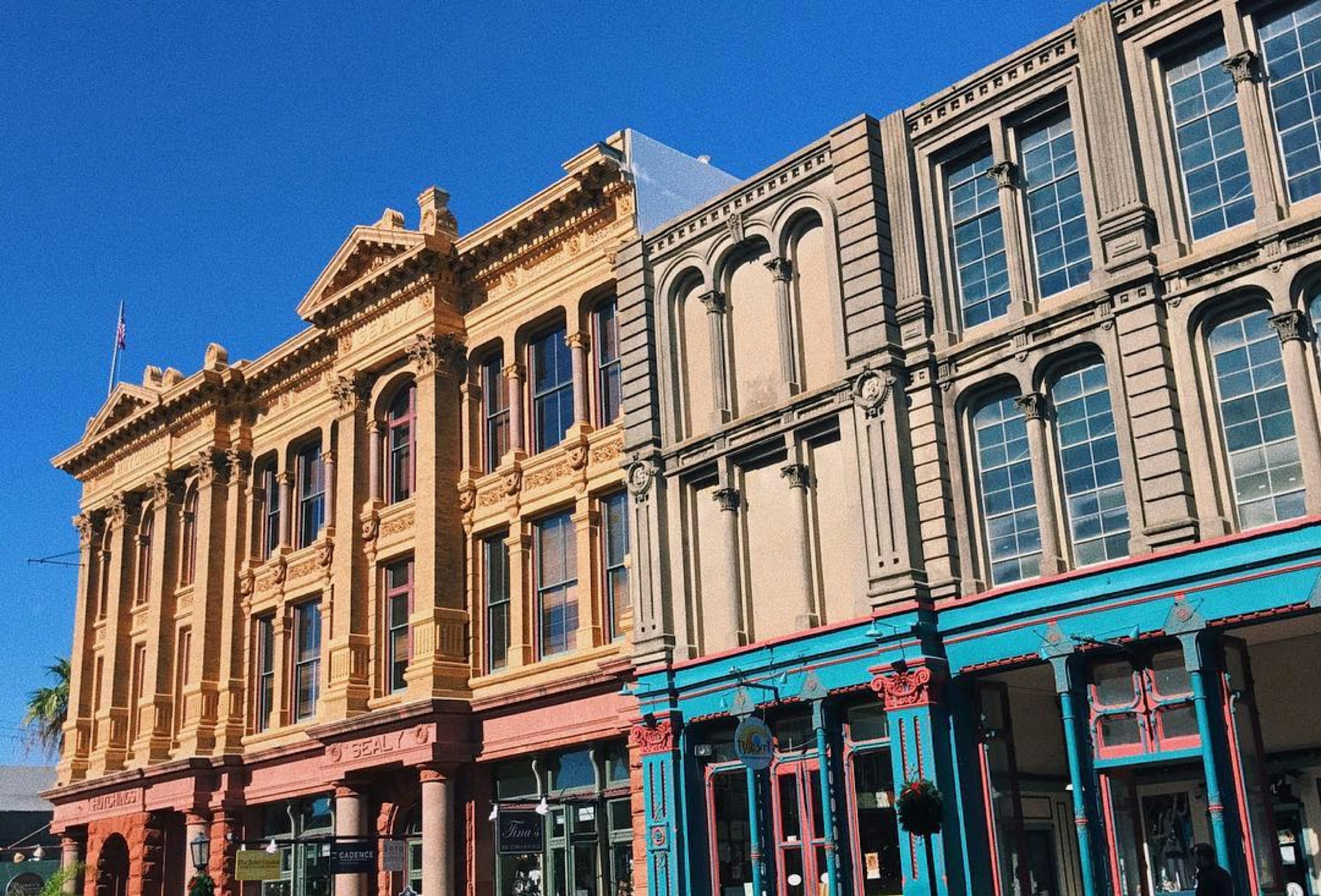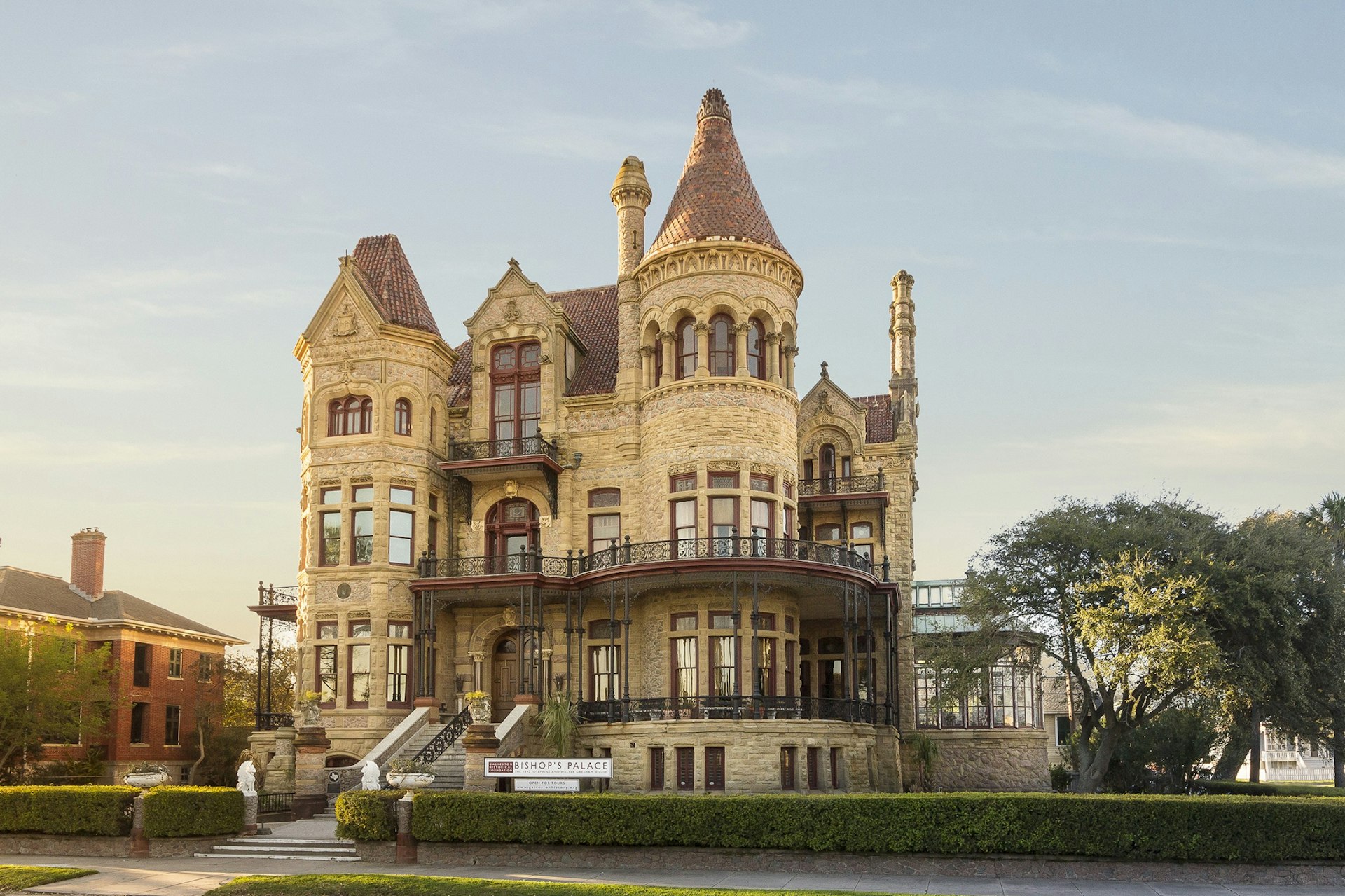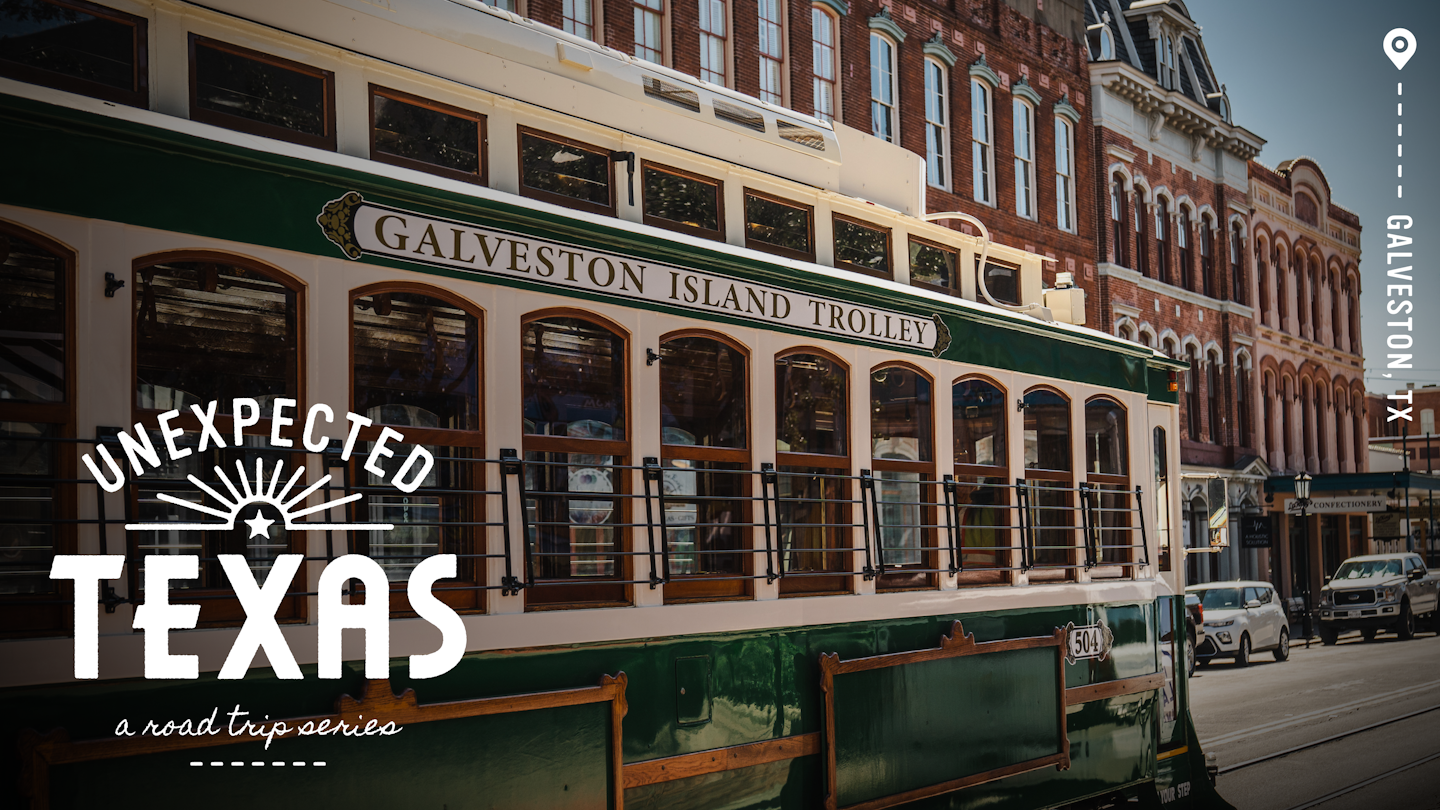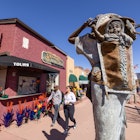Galveston is a sun-soaked island with 32 miles of coastline to help you work on your tan, improve your surfing skills and eat a bounty of seafood. But Galveston also offers more than a relaxing beach getaway – hidden in plain sight are reminders of when the city was a bustling port known for its bottomless wealth, technological advances and opulent architecture.

Nowhere else in Texas can visitors find such a concentrated set of historical sights. From its role as the birthplace of Juneteenth, to the city’s important chapter in the immigration story of America, to its preserved Victorian neighborhoods, history is on display at every turn of a street corner.

The Strand Historic District
In the 1800s, Galveston held the largest port west of New Orleans and the third busiest port in the United States. Thanks to the thriving shipping business, by the late 1880s Galveston had become one of the richest cities in the world per capita. Much of that wealth made its way to The Strand, a street that runs parallel to Galveston Bay. Dubbed “The Wall Street of the South” the street was lined with banks, wholesale houses, grocers, cigar dealers, cotton factories, commission merchants, dry goods companies and boarding houses for sailors.
Today the Strand District is still the island’s center for commerce. Opulent iron-front Victorian-era buildings house boutiques, antique shops, art galleries, souvenir shops, restaurants and bars, and anchor the historic downtown. Head to The Strand to sip craft cocktails while taking in the panoramic view of the city at The Tremont House’s Rooftop Bar, learn about the city’s history through a “Ghosts of Galveston” tour and grab a scoop of ice cream at 1920’s throwback La King’s Confectionery and Ice Cream Parlor. The Strand is also a year-round destination for the island’s biggest special events like Mardi Gras, Dickens on the Strand and the Lone Star Rally.
Texas Tidbit: Get a taste of Galveston’s local music scene with Music Nite on The Strand. The free monthly live concert series at Saengerfest Park runs from April to October.

Historic Seaport
In addition to commerce, Galveston’s port was a major portal for immigrants seeking entry into the United States. Historians estimate 200,000 immigrants passed through Galveston from 1865-1924 giving the island the reputation as the second Ellis Island. Today, you can follow the footsteps of those early immigrants at Galveston’s Historic Seaport’s Ship to Shore exhibit. The new experience combines hand-on interactive learning with immersive experiences to bring to life the real human stories of survival and challenges for those immigrating to the United States through Galveston.
While at the seaport, get a taste of high seas adventure by exploring the decks of the Tall Ship Elissa. This floating National Historic Landmark was built in 1877 as a merchant vessel. Today it is one of only three of its kind that still sails actively.
Galveston still remains an active port today – in fact, it is the fourth busiest cruise home port in the United States. The city is a popular departure point for cruises and in late 2022, Norwegian and Princes cruise lines will join Carnival, Royal Caribbean and Disney as the five cruise lines departing from Galveston.

Juneteenth
Galveston holds a special place in American history as the birthplace of Juneteenth. Two months after the end of the Civil War, slavery in Texas remained largely unaffected. That changed on June 19, 1865, when General Gordon Granger marched through Galveston reading General Order No. 3, which announced all enslaved Africans were free. From that year forward, Texans have observed Emancipation Day (or Juneteenth as it is now known) to celebrate the liberation of all enslaved people across Texas.
You can retrace the historic footsteps of General Granger and his troops with the Freedom Walk Challenge on the Visit Galveston mobile app. The walk begins at Pier 21 with the Middle Passage marker that commemorates the enslaved Africans who passed through the port of Galveston. The walk includes a stop at the 5,000-square-foot Absolute Equality mural. The mural overlooks the site historians believe marks the spot that General Order No. 3 was first issued.

East End Historic District
The East End Historical District is a 50-block area east of downtown that encapsulates the jewels of Galveston’s Gilded Age. The quaint island neighborhood is home to the largest collection of well-preserved Victorian architecture in the country. Colorful historic homes featuring Victorian, Greek Revival, Queen Anne and other architectural styles date back to the mid-1800s to early 1900s.
The neighborhood’s most notable homes include the oldest surviving home in Galveston, known as the 1838 Menard House, the fully restored Ashton Villa built in 1859 as one of the first brick structures in Texas and the 31-room Romanesque Moody Mansion built in 1895. You can tour 20 rooms in the Moody Mansion.
Bishop’s Palace built in 1892 might be Galveston’s grandest building. The ornate stone palace features intricately carved ornaments, stained-glass windows, bronze dragons and a silver fireplace. The American Institute of Architects cited the Victorian castle as one of the 100 most important buildings in America.
The Bryan Museum features the world’s largest collection of Southwestern artifacts, and is also tucked away in the East End. The collection includes 70,000 items spanning 12,000 years – everything from original correspondence from the infamous pirate Jean Lafitte to a Confederate soldier’s violin-shaped shotgun to a Spanish mission bell is on display. The museum is housed in the historic Galveston Orphan’s Home, founded in 1878.
Texas Tidbit: Take a free self-guided tree sculpture tour through Galveston’s East End. In 2008, the powerful waters of Hurricane Ike destroyed the majestic Oaks that once lined the streets. Sculpture artists breathed life back into the trees by turning them into a work of art.











